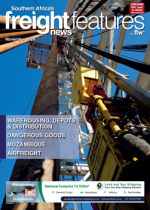The J&J Group has recently opened a new bonded facility in Harare, responding to regulatory changes in Mozambique that necessitated alternative solutions for clients. "Setting up a bonded facility that could accommodate our clients was our priority," said Kevin Hutton, COO warehousing at J&J Africa. "We are now able to offer the same high level of service as well as security for their cargo in Harare."Hutton emphasised the need for adaptability in the logistics industry. “The world will change, and so must we. This new development showcases that the company has the agility to respond swiftly to market demands.”According to Hutton, ongoing investment is crucial in the warehousing and distribution sector. “The product and commodity mix is constantly evolving. Each year brings changes in what we handle; one year we might focus on bulk cargo, while the next could see a shift to bagged goods or copper cathodes transitioning to copper concentrates. Each of these products requires distinct handling processes, equipment, and space considerations, which is particularly unique in ports like Beira,” he explained. “Our ability to adapt to these changes is one of our greatest strengths and a key reason for the success of our business.”He said an emerging trend in the local Mozambique warehousing and depot sector was the increasing demand for reefer and cold storage solutions. “The J&J Group has been proactive in this area, increasing our capacity to accommodate this demand. While it's difficult to predict whether this trend will continue, we firmly believe that if we can deliver a world-class service, clients will keep choosing the corridor. There are many factors to consider, and we hope that shipping lines, ports, and other stakeholders will adapt alongside us.”He highlighted some of the current challenges facing the Beira region, which was heavily congested. “This situation is expected to persist until December. The impact of this congestion on the corridor is enormous, resulting in astronomical financial implications for transporters and clients. It takes three days just to get into the port or warehouses, which slows the entire supply chain down, and it’s never easy to recover those lost days.”He said that congestion cycles continued to shift between ports such as Dar es Salaam, Beira and Durban, allowing customers – especially those exporting high-value minerals – to switch between outbound ports based on inland waiting times. “The same can be said for ocean freight congestion, where demurrage affects agricultural import markets. We are also seeing Walvis Bay emerging as an option. Depending on their final import location, customers may bypass one of these ports to divert shipments to the least congested option at the time, ultimately saving costs and facilitating smoother outbound movements.” Regarding distribution trends, Hutton noted the importance of inventory management in today’s rapidly evolving markets. “With constant changes in consumer behaviour, the industry is adapting to greater buy-in on systems, data analytics, and digital integration to maintain and grow margins, even though consumers have more options from competitors. Timing and stock level controls are more closely forecast, monitored and managed than ever before, regardless of the service provided or the goods being traded.” LV

